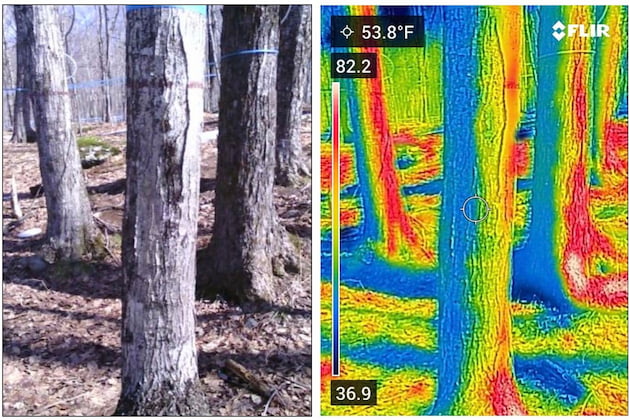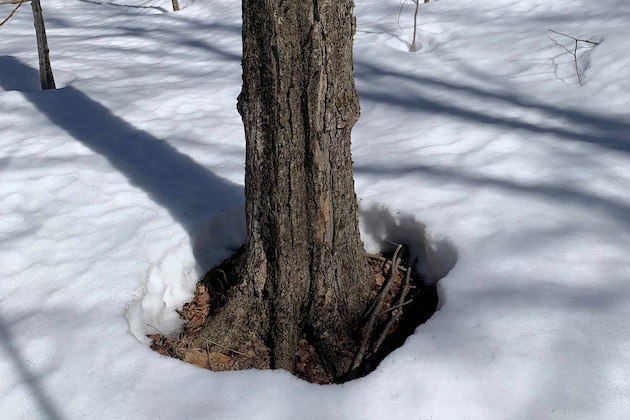UVM Proctor Page
Why the sap may not always flow well in the early season
By TIMOTHY D. PERKINS, ABBY VAN DEN BERG, BRENDAN HAYNES | MAY 7, 2021
UNDERHILL CTR., Vt.—Maple producers know that when the temperature starts to rise in the spring, sap flows can’t be far behind.
But when the weather starts to warm early in the spring and temperatures seem favorable for good sap flows, they are sometimes left wondering why the sap hasn’t started to run.
There are several explanations for the disconnect between warm air temperature and a lack of flow during the early season.
First, trees are big and can have a large amount of thermal inertia (resistance to change).
By that we mean that tree temperature is buffered and will not always respond quickly to changes in air temperature.
Whereas air temperature can rise quickly during the day, it takes a while for the large mass of wood to warm up, particularly if it has been very cold prior to a warm period.
Even though the air temperature may rise well into the 40’s, the stem can remain frozen, thus no sap will flow out of tapholes.
Secondly, some amount of transpiration occurs through the bark of the stem and branches even while it is cold.
Therefore, the wood in the stem and branches may be depleted of moisture after a prolonged period of cold weather.
Until there is a good thaw followed by freezing conditions to recharge the moisture in the system, sap flows will be weak.
Water cannot be taken up through a frozen stem.
If snow is packed tightly around the base of the tree, that segment of the stem remains frozen even if the air temperature is high.
Only after there is enough melting of snow from around the stem and root flare (Figure 1) will that blockage be eliminated, and water can be taken up during a subsequent recharge cycle.
Even after snow has melted from around the base of the tree, the stem has thawed, and a recharge has occurred, we may find that sap yield from trees is only modest for a period of time.
Temperature patterns within different portions of the trunk can vary considerably, especially on sunny days with low wind (Figure 2).
Stems, particularly of larger individuals, do not all freeze and thaw at the same time.
Early in the season the south-facing sides of stems may thaw and conduct sap, but the north sides of the trees can remain frozen.
Conversely, in the late-season, north sides of the tree may freeze, spurring water uptake and subsequent sap exudation, even if the south sides remain in a thawed condition with little sap flow.
Temperature patterns in large trees can be complex and vary considerably throughout a season, yet sap yields are closely tied to the temperatures in the area around the taphole and beyond the taphole.
So if air temperature seems right, but the sap isn’t flowing…there is likely to be a good reason for it.

































